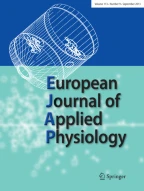Abstract
As one considers changes in motor activity from lower mammals to higher primates, one of the major changes one observes lies in the cortical control of forelimb muscles. There has been a shift from disynaptic control of spinal motoneurons in, for example, the cat, to a greater and greater percentage of monosynaptic control of hand and forelimb motoneurons in the primate. In spite of the species and evolutionary changes in the synaptic connections of the corticospinal tract, it appears that the interneurons identified in the cat are retained in the monkey and human. These interneurons, under the influence of descending pathways, modulate the output of motoneuron pools. Perhaps the control of these interneurons has also changed towards finer control of movement, as has been suggested by recent studies in the monkey. Whether in cat or human, the recruitment pattern for motor units is the same; the change from disynaptic to monosynaptic connections has not changed the recruitment pattern of muscles. Differences in the recruitment patterns of muscles may lie in the finer control of inputs to motoneurons in the primate. This review seeks to integrate the current knowledge of the mechanisms involved in the motor control of the wrist joint and especially in the recruitment patterns of the muscles. These motor control mechanisms include the biomechanics of the wrist joint, recruitment patterns of wrist muscles, interneurons and spinal cord circuits in the cervical regions mediating the output of spinal motoneurons, and the supraspinal control of these muscles.
Similar content being viewed by others
Author information
Authors and Affiliations
Additional information
Accepted: 30 May 2000
Rights and permissions
About this article
Cite this article
Bawa, P., Chalmers, G., Jones, K. et al. Control of the wrist joint in humans. Eur J Appl Physiol 83, 116–127 (2000). https://doi.org/10.1007/s004210000270
Issue Date:
DOI: https://doi.org/10.1007/s004210000270
